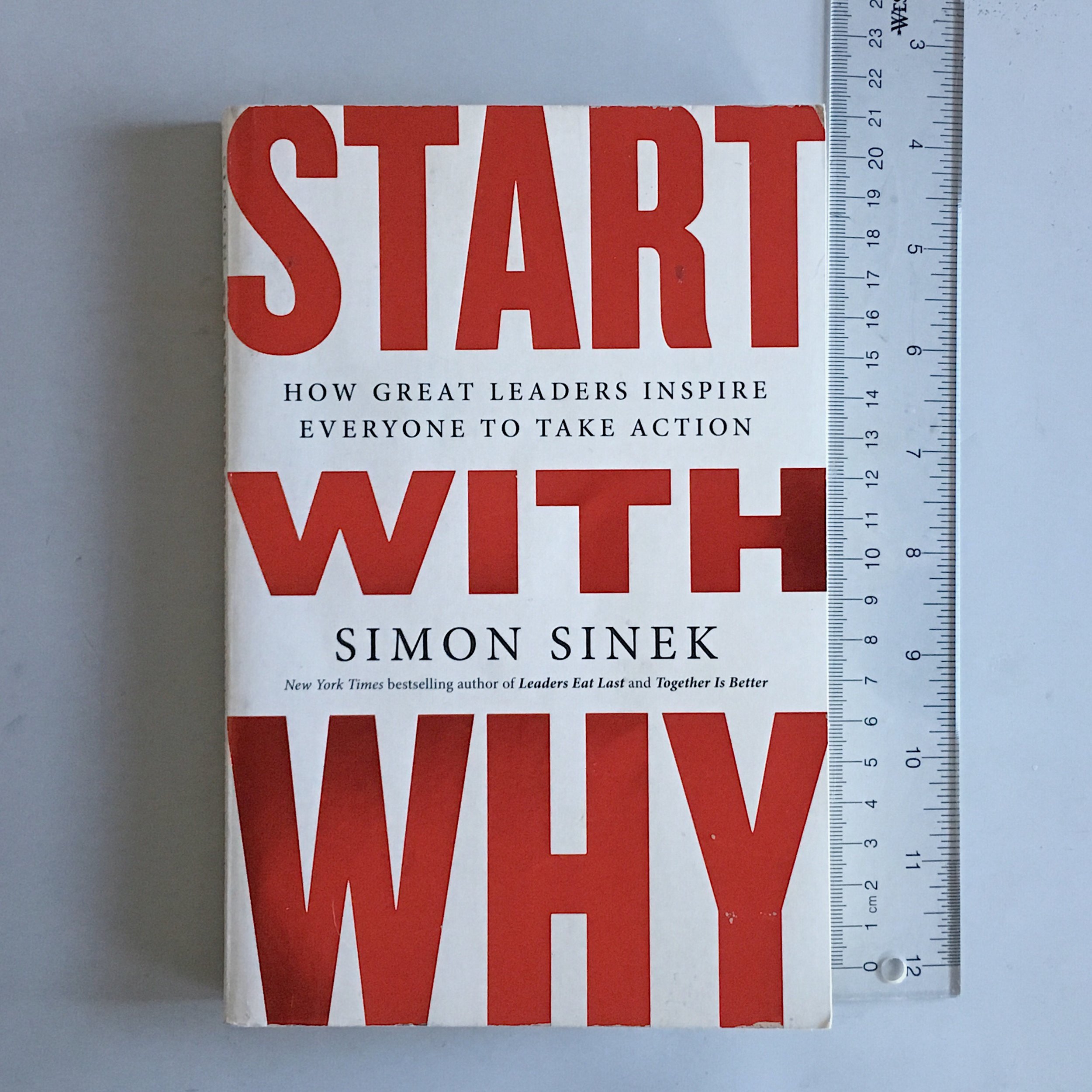Start with Why by Simon Sinek
The Book in 3 Sentences
People don’t buy what you do, people buy why you do it. Defining why you do something is difficult, as we usually rely on metaphors, imagery and analogies in an attempt to communicate how we feel. Therefore, guiding principles have to be actionable verbs: “always do the right thing” (integrity), or “look at the problem from a different angle” (innovation).
Notes on the Book
The book re-iterates the same point from many angles. I suspect the book could have been half as long (or less) and still got the same point across. In fact, you can glean nearly all the information from in this book from his 18-minute TED Talk “How Great Leaders Inspire Action.”
The Principle of WHY
Companies try to sell us what they do, but we buy why they do it. (p42)
People don’t buy what you do, people buy why you do it. (p41)
If Apple were like everyone else, a marketing message might sound like this:
[ WHAT ] We make great computers.
[ HOW ] They’re beautifully designed, simple to use and user-friendly. Want to buy one?
However, Apple instead starts with why and follows with the how and what.
[ WHY ] Everything we do, we believe in challenging the status quo. We believe in thinking differently.
[ HOW ] The way we challenge the status quo is by making our products beautifully designed, simple to use and user-friendly.
[ WHAT ] And we happen to make great computers. Want to buy one?
The products Apple make serve as tangible proof of their cause. (pp40–41)
All organizations start with why, but only the great ones keep their vision why clear year after year. We’re always trying to be better than someone else: better quality, more features, better service. And no one wants to help us. What if we showed up to work every day simply to be better than ourselves? What if the goal was to do better work this week than we did the week before? Having a sense of why you’re doing something keeps everyone involved feeling inspired and the product inherently authentic. (p224)
The struggle many companies have to differentiate or communicate true value is not a business problem, it’s a ‘biology’ problem. Like a person struggling to put their emotions into words, we rely on metaphors, imagery and analogies in an attempt to communicate how we feel. We instead tell stories, use symbols, and create tangible so those who believe what we believe can point to and say, “That’s why I’m inspired.” (p159)
Most companies have logos, but few are able to convert those logos into meaningful symbols. Instead, they remain devoid of meaning, as icons to identify a companies products. Without the clarity of why, a logo is just a logo. (p161)
If your why and their why correspond, and the why, how, and what are in balance, the authenticity is achieved. (p74)
The Celery Test
Imagine you’re in a supermarket with a cart full of items recommended by other people (oreos, cereal, chocolate… and celery). You’re overloaded by only focused on your what.
What if you’d began with your why instead? For this example, let’s say your why is to only do things that are healthy. This changes everything! You can ditch the cereal, cookies, etc, and you’re only left with healthy ingredients (like celery). Now as you walk around the supermarket with the celery it’s obvious to everyone what you believe (your why). (p167)
Lesson: With a why clearly stated in an organization, anyone within the company can make a decision as clearly and accurately as the founder. A why provides the filter for decision making (everything should pass the celery test). (p168)
The School Bus Test
Passion alone isn’t enough to sustain a company or a cause. A why without the hows — passion without structure — has a high probability of failure. The school bus test is a simple metaphor: if the founder were to be hit by a bus tomorrow, would the organization continue to thrive at the same pace without them?
Lesson: You can’t cling to the leader, you must find effective ways to keep the founding vision alive. The why must be extracted and integrated into the culture of the company. (p184–186)
Build Actionable Guiding Principles
The discipline of never veering from your cause, holding yourself accountable to how you’ll do things, is often made more difficult. We remind ourselves of our values by writing them down, often as nouns: Integrity, Honesty, Innovation, etc. Nouns are not actionable, they’re things! Things you can’t build systems around or hold people accountable to. Instead, guiding principles have to be actionable verbs: “always do the right thing” (integrity), or “look at the problem from a different angle” (innovation). (p66–67)
Leadership
Energy motivates but charisma inspires. Energy is easy to see, easy to measure and easy to copy. On the other hand, charisma is hard to define, hard to measure, and too elusive to copy. All great leaders have charisma because they have the clarity of why. (p134)
The role of a leader is not to come up with all the great ideas; the role of a leader is to create an environment where great ideas can happen. (p99)


